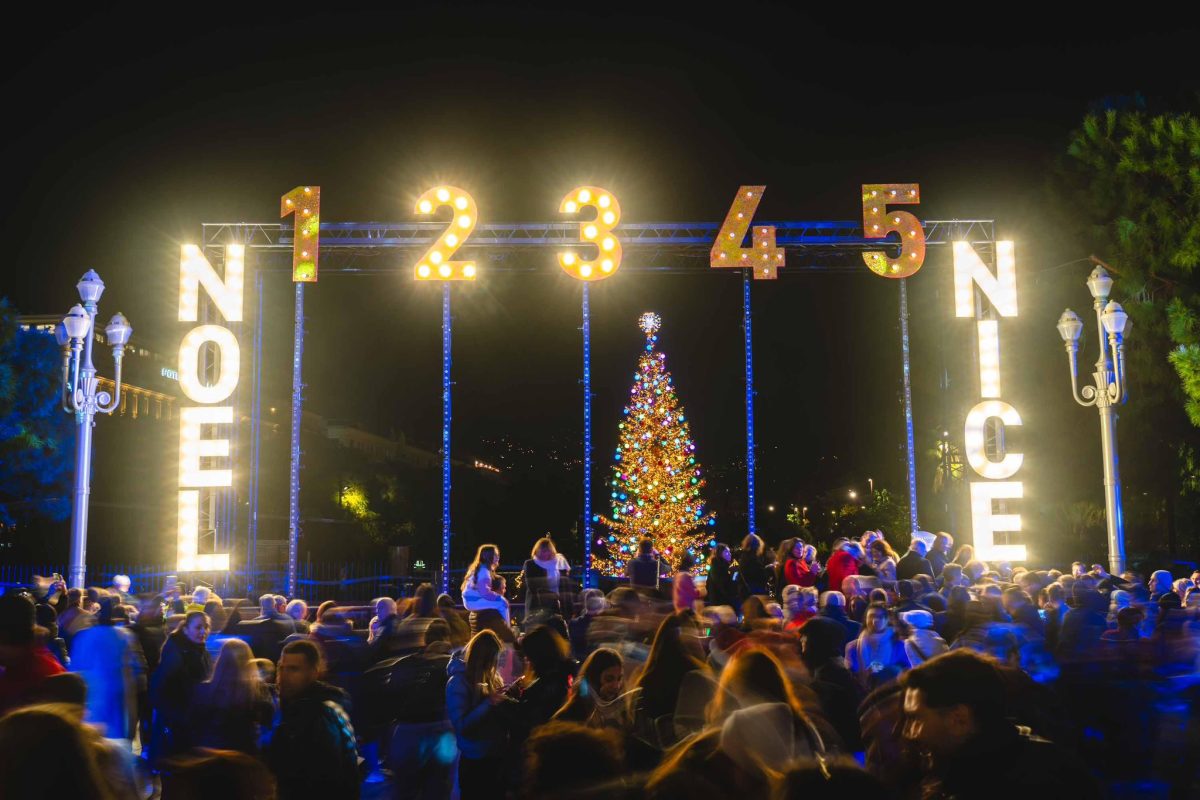Every holiday season, the city of Nice lights up with dozens of kilometers of garlands and hundreds of light motifs. Here’s more about the setup deployed this year.
Nice has been shining brightly since November 28. The Christmas lights were officially launched on December 7 at Place Masséna by Christian Estrosi. 150 kilometers of light garlands adorn nearly 700 trees throughout the city. From Carras to Rauba Capeù, the 300 palm trees along the Promenade des Anglais have donned their most beautiful light decorations.
Between two palm trees, facing the Lenval Hospital, a new 8-meter tall Santa Claus has been installed, brightening the day for hospitalized children. These children contributed to the Christmas magic by creating drawings, which were transformed into five luminous decorations installed in the Christmas village.
Popular among children, the water mirror on the Promenade de Paillon now features a 12-meter tall Christmas tree. In total, 49 Christmas trees, each 7 meters tall, have been decorated and set up in each major district of the city, 16 more than in 2020.
The Place Garibaldi welcomes a new tenant this year: a 4-meter tall “teddy bear” installed near the carousel. The iconic Place Masséna enjoys a light display on its facades behind the Sun Fountain.
Are the Christmas lights eco-friendly?
Since 2010, the municipality has replaced halogen lamps with LED (Light Emitting Diode) lights, which consume less energy. According to the city of Nice, these LEDs have “5 to 10 times the brightness of the previously used halogen lamps with 9 times less power consumption”. The city claims to have reduced its energy bill by a factor of 7 to 10 as a result.
The 850 horizontal and vertical motifs installed across the city are also under particular scrutiny. These structures, typically made from aluminum alloy, are now designed with 3D printers using a material based on sugarcane. These designs are described as recyclable and biodegradable.
The lights are the work of the Blachère company. “This new process generates no waste during manufacturing and allows for total recyclability in a short circuit at the end of the motif’s life, thanks to grinding the structure and reusing it as granules,” the municipality shares in a statement.
According to the city of Nice, the production of these recyclable materials emits 10 times less CO2 than aluminum.


